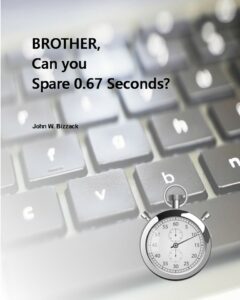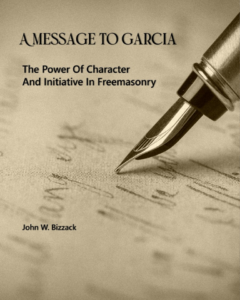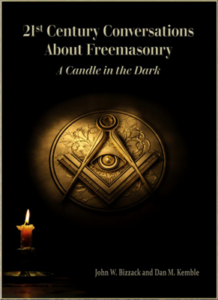How Freemasonry unfolded and evolved as an organization in the United States is an interesting story. One of the fascinating parts of that story is in how clearly becomes the answer to the question as to why much of the fraternity looks and behaves like it does today and faces the same issues as the ones troubling it over the past 160 years or more. The story provokes thought, at least to the non-casual Masons who take the time to study the facts of the unfolding, because it makes clear what happens when a majority of an organization’s culture takes an artless stance, then hones and passes on that stance through generations who cling to the belief that adequate fundamental instruction and education beyond passing through ritual is unnecessary.
Read MoreThe song, Brother, Can You Spare a Dime? was composed for a 1931 Broadway musical called New Americana and originally performed by a man playing a sort of American “everyman.” According to lyricist E.Y. “Yip” Harburg (who later penned Somewhere Over the Rainbow), the song was meant to capture the confused feeling of the Great Depression. “He’s bewildered. Here is a man who had built his faith and hope in this country,” he says of the character. Once everything begins to dwindle, the character cannot accept that the bubble has burst, but he still believes. He still has hope that things will turn around. “He just doesn’t understand what could have happened to make everything go so wrong.”
Read MoreWhat is Masonry? What is it trying to teach? What does it seek to do? Above all, what can it do for the man who receives it into his heart, loves it, and lives in the light of it? You get the answers to these questions from reading Joseph Fort Newton’s 1924 book, The Men’s House. And the answers come from-a 20th century Mason who viewed Masonry through his faith and embraced a simple insight into the dignity and truths of its principles.
Read MoreWe don’t think much about polishing our shoes these days. In fact, interest in durable leather footwear has been declining for quite some time. The preference for the more casual convenience offered by a variety of informal footwear continues to alarm the leather and the old shoe industry. Droughts over the past decade have affected, and will, for years to come, continue to affect the cattle market, where most leather is produced, which, of course, affects costs in the manufacturing of leather shoes. Also, the onset of more ethically conscious shoppers demanding more alternatives to leather has led designers to utilize fake leather, as well as to companies switching to various other materials to signal their environmental awareness.
Read MoreThe twenty-four-inch gauge is the first working tool given to an Entered Apprentice Mason. We find it described as an instrument of the operative Mason with no authority other than ritual cited. The instrument is not mentioned in the Gothic Constitutions as used in early Masonic ceremonies. In the Edinburg Register House Manuscript (1696), we find it referred to as the “common judge” (a gauge or template). It is first mentioned as the twenty-four-inch gauge in 1724, then again in 1762 in the Masonic exposure, Jachin and Boaz. The term is found again in Thomas Smith Webb’s Freemasons Monitor or Illustrations of Masonry (1797).
Read MoreA Message to Garcia was originally published as filler without a title in the March 1899 issue of the avant-garde magazine, The Philistine, a periodical published in East Aura, New York. The publication, at the time, was written entirely by American writer, publisher, artist, and philosopher, Elbert Hubbard. Soon after the appearance of the untitled article, orders came for more copies and eventually reprints (reported to be as many as 225 million by 1926) were distributed around the world. The message of the inspirational essay spawned two Hollywood films, was translated into 37 languages, and became well-known in American popular and business culture until the middle of the twentieth century.
Read MoreGilbert Keith Chesterton, prolific journalist, and British author, was well known for his apologetics, biographies, detective fiction, literary, social, and political commentary, and modern history. Reviews of his writing commonly note his mastery of paradox, genius, and cordial and humor. Whenever possible, Chesterton made his points with popular sayings, proverbs, and allegories—first carefully turning them inside out. In 1902 the Daily News gave him a weekly opinion column, followed in 1905 by a weekly column in The Illustrated London News, for which he continued to write for the next thirty years. Many of his essays and opinion writings were published as books. Today, over one-hundred books by or about Chesterton’s writings are published.
Read MoreIn 1709, a proverb written by English poet and satirist, Alexander Pope, summarizes what many earnest-minded Masons, leaders in the Fraternity, and those we consider the most illuminated Masonic scholars have cautioned the Fraternity about since at least the early 1800s. Once the academic world began to pay attention to the phenomenon of Freemasonry as a part of social history around the mid-20th century, they, too, joined the choir. Pope’s proverb has become the troubling truth in our Fraternity, which has been so steadily expressed that it is practically qualified as a Landmark. He wrote, “A little learning is a dangerous thing.”
Read MoreTwo and half years after the end of the Civil War the Southern economic market remained bankrupt. Reconstruction of the South (1865-77) was in its infant stage. Redressing the inequities of slavery and its political, social, and economic legacy was an extremely slow process, not to mention the efforts to solve the problems arising from the readmission to the Union the eleven states that had seceded.
Read MoreIn 1820, Lexington, Kentucky was one of the largest and wealthiest towns west of the Allegheny Mountains. So cultured was its lifestyle that the city gained the nickname, “the Athens of the West.” The exceptionally warm temperatures and rainfall in the spring of 1833 left large pools of standing water in the downtown area of the community that did not yet have a sufficient sanitary water supply or run off disposal system. The town’s drinking water was soon contaminated. A brief but devastating cholera epidemic ensued.
Read More



